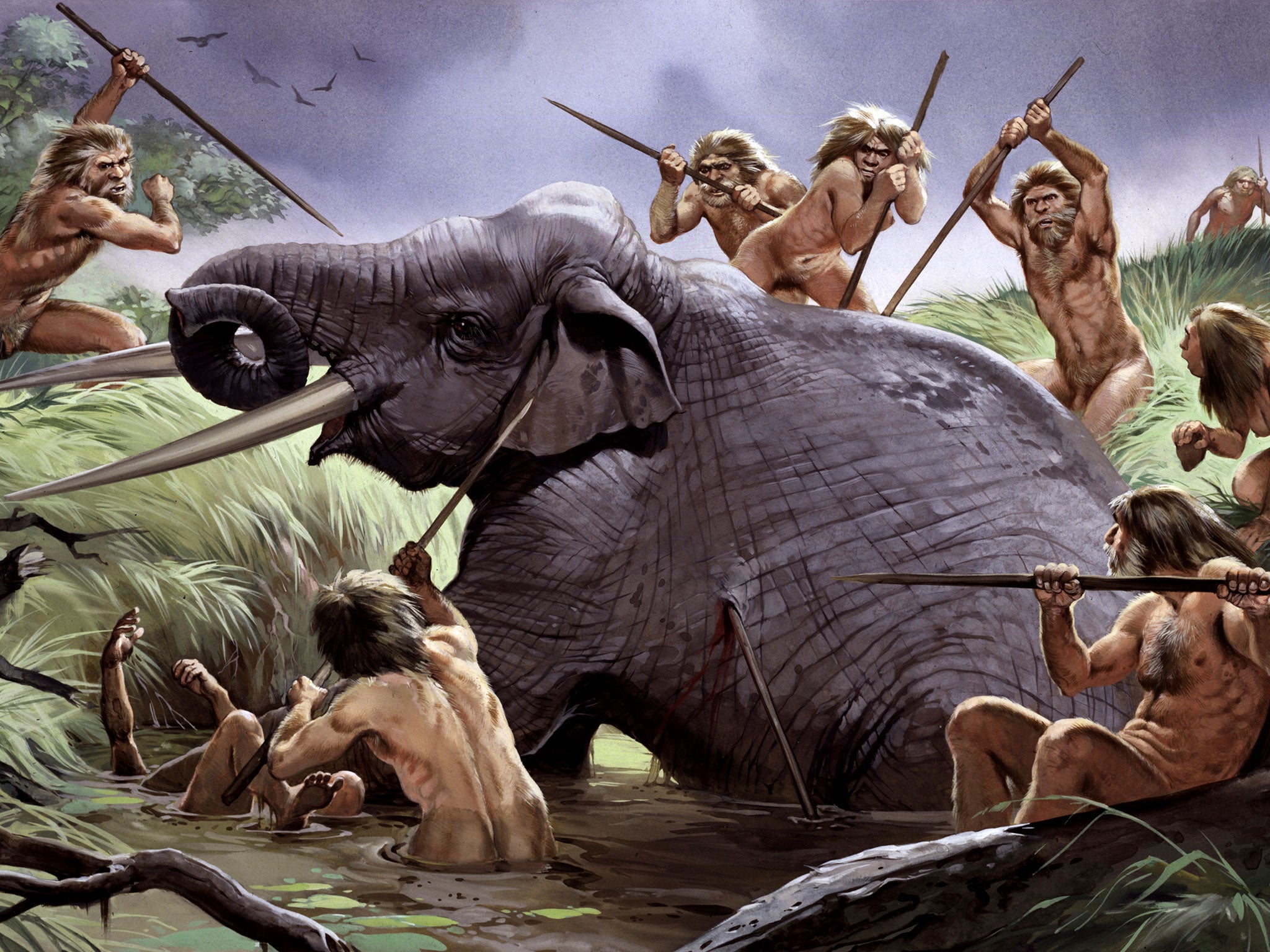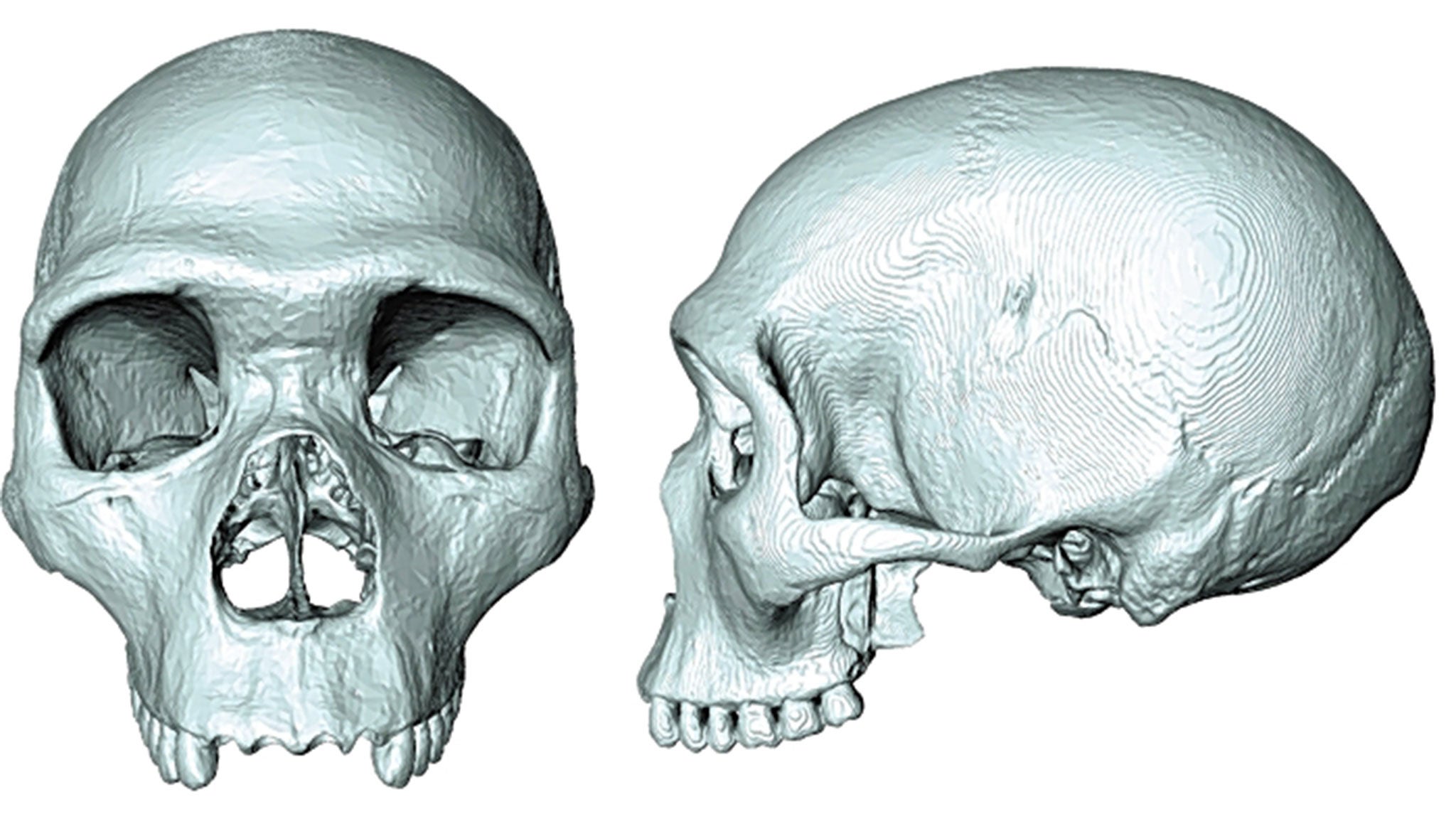Scientists reveal what our long-lost ‘virtual ancestor’ looked like before evolutionary split 700,000 years ago
Study shows the unexpectedly vast amount of time it took for ancestral species to eventually evolve into modern humans

Scientists may have just cracked a 700,000-year-old prehistoric mystery – what our ancestors looked like before early humanity split into the two different lineages that would become the Neanderthals and modern humans.
Until now, scholars had thought that the split that eventually led to the development of Homo sapiens (modern humans) and Homo neanderthalensis (Neanderthal) had taken place in Africa or Asia some 400,000 years ago.
But the new research from Cambridge University suggests the split probably occurred at a much greater time depth, in around 600,000 to 700,000 years ago.
As well as revealing for the first time what our immediate “pre-split” ancestors looked like, it also therefore shows the unexpectedly vast amount of time it took for that ancestral species to eventually evolve into modern humans in Africa and into Neanderthal humans in the Middle East and Europe. The researchers’ next step will be to similarly computer-model that common ancestor’s lower jaw and chin and then finally to use modern forensic techniques to digitally put flesh and skin on the complete skull to produce the first scientifically-deduced “photofit” of what our long-lost ancestors actually looked like.

Our 'digital ancestor'
By computer modelling the available fossil data, researchers have concluded that our long-lost “pre-split” common ancestor had a large protruding nose, prominent broad brow ridges, hollow cheeks and a sloping forehead.
However, the face of the newly modelled virtual ancestor also shows hints of the substantial indentation that modern humans have under our cheekbones, contributing to our more delicate facial features.
This feature was inherited by us but was not by our prehistoric Neanderthal cousins.
The new date for the original evolutionary split also suggests the possibility that climate may have played an even greater role in the story than previously thought. In around 700,000BC much of Africa’s climate became more frequently wetter and, as a result, the Saharan region became intermittently much less arid. This is turn almost certainly allowed an African human species called Homo heidelbergensis to expand into previously inaccessible territories on that continent.
It is likely that the 600,000-700,000BC split into two evolutionary lineages occurred as a result of this climatically-induced geographical dispersal.
It is probable that the more northerly of the Homo heidelbergensis groups then began to evolve differently to its more southern opposite number and subsequently relatively rapidly left Africa (by around 620,000BC) and by 350,000 years ago had developed in the Middle East and Europe into Neanderthal Man.
Meanwhile, the southern group seems to have remained in Africa – and evolved into modern humans (Homo sapiens) by 200,000 years ago. By 100,000 BC, some Homo sapiens groups then also left Africa and quickly populated the world, eventually displacing all other species of humanity, including Neanderthal Man.
How they cracked it
The research team digitally generated three possible ancestral skull shapes that corresponded to three predicted potential “evolutionary split” times between the two lineages. They digitally rendered complete skulls and then compared them to the original fossils and bone fragments of the period.
This enabled the researchers to work out which “virtual” skull was the best fit for the ancestor we share with Neanderthals, and which time frame was therefore most likely for that last common ancestor to have existed in.
The new “morphometrics” technique, used by the Cambridge scientists in an evolutionary science context for the first time, is now likely to be used to help fill in the many blanks in geological time for which there is as yet no direct fossil evidence. It has the potential to digitally recreate a whole series of “missing links”.
The Cambridge scientists used so-called digital morphometrics and statistical algorithms to extrapolate forward to and backwards from known morphological data obtained from 15 fossilised early human skulls and skull fragments from both before and after the split. That data was used by the scientists to plot changes across time of almost 800 different “points” on the “topography” of the evolving prehistoric human face and cranium, including that of Homo erectus, the first species of human to migrate out of Africa about 1.9 million years ago. Literally thousands of pieces of morphological data from prehistoric human skulls, covering much of the past two million years, were used in the process.
“We have long-known that we share a common ancestor with Neanderthals, the extinct species that were our closest prehistoric relatives. But what that ancient ancestral population looked like has, until now, remained a mystery, as fossils from the period during which the lineage split, are extremely scarce and fragmentary,” said Aurélien Mounier, the Cambridge scholar who carried out the modelling work.
“Our new research has now revealed for the first time what that common ancestor probably looked like,” he said.
The newly computer-modelled ancestral skull bears early precursor characteristics that would later feature in our species or in Neanderthal Man.
For example, it shows the initial development of what in Neanderthals would later become a so-called “occipital bun” – the prominent bulge at the back of the skull that contributed to the elongated shape of Neanderthal heads.
The heavy, thickset brow of the computer-modelled “virtual” ancestor is very characteristic of early pre-anatomically modern human lineages and very similar to Neanderthal, but lost in modern humans. Dr Mounier says that the new “virtual” fossil skull is more reminiscent of Neanderthals overall, but that this is not surprising as, taking the timeline as a whole, it is our species Homo sapiens who deviate most from the ancestral trajectory in terms of skull structure.
For their next project, Mounier and colleagues have started working on a model of the last common ancestor of our genus (Homo) and chimps.
The Cambridge morphometrics research is being published in the ‘Journal of Human Evolution’
Join our commenting forum
Join thought-provoking conversations, follow other Independent readers and see their replies
Comments